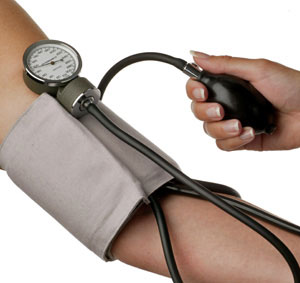Pediatric Hypertension
Pediatric hypertension, or high blood pressure in kids, is a problem that is growing nationally. Blood pressure can be thought of as the resistance or pressure exerted in the walls of the blood vessels throughout the body. The heart is required to pump blood throughout the vessels in the body. The higher the pressure or resistance in these blood vessels, the more work the heart must do to generate force to pump blood. Elevated blood pressure, therefore, is a problem in that it increases the workload on the heart.
High blood pressure is a known risk factor for the development of hardening of the arteries (atherosclerosis). Atherosclerosis is one of the major health issues in our country today. It is responsible for problems such as strokes and heart attacks, as well as many other issues. Although these types of problems are extremely uncommon in children and teenagers, changes responsible for the development of atherosclerosis in adulthood can start at a young age. Other risk factors related to atherosclerosis include high cholesterol and triglycerides, diabetes, cigarette smoking, obesity, lack of physical activity, age, and genetic factors.

High blood pressure is usually first noticed during regular checkups at the pediatrician's office. In many instances a child may be nervous or somewhat scared; therefore it is helpful to have the blood pressure checked several times to confirm a high reading prior to considering further evaluation for high blood pressure.
Normal blood pressures in children are different than those in adults. In general, the younger and smaller the child the lower the blood pressure should be. Tables with normal values for age, as well as the upper limits of normal, have been established and published by the American Academy of Pediatrics.
Most high blood pressure in the pediatric age group is idiopathic. This simply means that there is no clearly identifiable cause. However, the younger the child and the higher the blood pressure the more likely a secondary cause may exist. Secondary causes of high blood pressure may include kidney disorders and heart-related problems such as coarctation of the aorta. A number other secondary causes exist as well. An evaluation for secondary causes may be warranted by performing tests such as an echocardiogram, renal ultrasound, and laboratory work such as blood tests and a urinalysis.
Most children with high blood pressure are completely asymptomatic. Occasionally if the blood pressure is significantly elevated symptoms such as chronic headaches, fatigue, and dizziness may result.
Treatment of high blood pressure in children initially involves lifestyle changes. This includes increasing the amount of exercise a child gets, losing weight if necessary, and decreasing salt in the diet. In many instances these simple measures may suffice. If the blood pressure remains elevated despite these measures, medication may be required.
